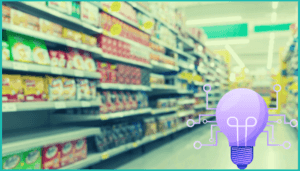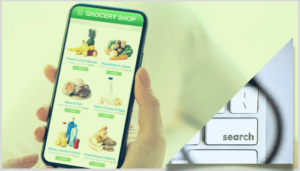4 Takeaways from Retail’s Biggest Events
Reading Time: 9 Minutes
This quarter was packed with exciting retail industry events! Our team attended the FMI Midwinter Conference, the Category Management Association’s Conference, the National Grocers Association show, and Shoptalk. These shows sparked great conversations, showcased amazing sessions and speakers, and highlighted the latest trends in grocery retail.
These events reinforced our commitment to empower you with the tools and knowledge you need to succeed in today’s competitive market.
Keep reading for 4 retail revelations from some of the industry’s most acclaimed conferences…
1. Winning with AI
The success of AI hinges on one critical factor: adoption.
Retail organizations that truly embrace AI stand to gain a significant competitive advantage, and here’s why:
- Smarter with every interaction: AI models learn as you use them. (This means that companies like Bungee Tech, with 6 years of retail-specific model training, give you a distinct edge. Our models understand nuances like product attributes, pricing trends, and promotional activity with unmatched depth.)
- Continuous learning, continuous improvement: Our time using AI translates into every product match and pricing recommendation. Imagine the power of starting with a foundation of non-stop learning!
- Human in the loop for accuracy and refinement: Bungee Tech models utilize human feedback for auditing and improvement. This ensures AI recommendations are reliable and aligned with your business goals.
Simply having AI tools isn’t the key. Actively using and integrating them is what unlocks true growth potential.
2. Knowing What to Do with Data
Every retailer has data, the challenge is making it actionable.
Grocery retailers should be using data and analytics as a secret weapon! With it, you can better understand your business’s risks and opportunities, the competitive landscape, and gaps in your strategy or execution.
The catch? Usually your data is scattered around in different systems or with different teams, making it impossible to analyze. That’s where data harmonization comes in… It’s the process that makes your data clear and ready-to-use.
Making your data actionable enables you to…
- Price products more competitively
- Manage inventory to avoid out of stocks
- Personalize customer deals
- See your supply chain
- Drive profitability
3. Focusing on Private Labels
Store brands are a bright light for grocery retailers.
Store brands (or private labels) are a popular focus for many grocery retailers because:
- They help stores build loyal customers
- They offer customers high-quality products at competitive prices
And it’s working…
- Sales of private label brands hit a record high of $236 billion last year
- All store categories (except tobacco) experienced dollar sales growth in 2023
- 70% of consumers have experimented with private labels and 50% express their intention to continue into 2024
Private label pricing and promotions are a key driver of consumer adoption. Consumers want great products at affordable prices, and retailers are delivering.
4. Revolutionizing Retail with ESLs
Electronic shelf labels (ESLs) offer big benefits to grocers and their shoppers.
ESLs are tackling common grocery challenges and the industry expects to see this technology scale quickly. For store managers, ESLs mean no more manually changing thousands of price tags every time there’s a promotion or price adjustment. You can change the price on thousands of items in seconds.
Besides pricing, ESLs will help grocers with inventory management. If an item is out of stock, then the ESL can provide a note to the shopper. Versus a paper label, where a shopper might ask if the product is in the stock room.
To start, push ESLs out to part of your store. Then scale. In the future, imagine integrating ESLs into other systems like an item finder to light the tag while a customer searches for that product.
Another big benefit: Customers appreciate the accuracy – it improves their shopping experience.
ESLs are making grocery shopping a more efficient and informative experience for everyone.
As always, all of these events were buzzing with exciting information and impressive keynotes. AI continues to be a hot topic, as well as personalization technologies.
For us, the real stars of the show were the sessions that emphasized price optimization and high-quality data.
These are the cornerstones for grocery growth. By leveraging these elements, grocers can create a win-win situation: shelves are stocked with products at the right prices, and customers get a more convenient, valuable and satisfying shopping experience.
Here’s to a data-driven future for grocery shopping – one that benefits both retailers and customers alike!
The Latest Insights – Straight to Your Inbox
Sign up for the Bungee Tech mailing list for actionable strategies, upcoming events, industry trends, and company news.














